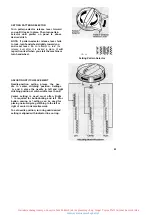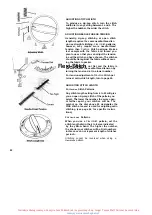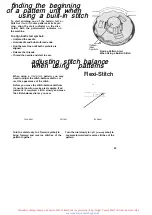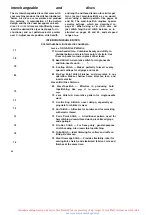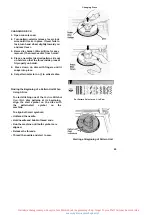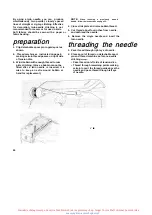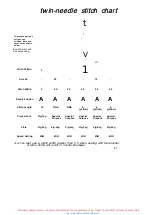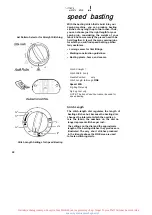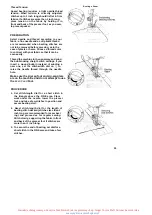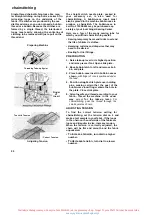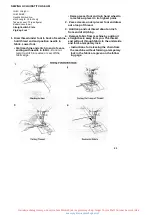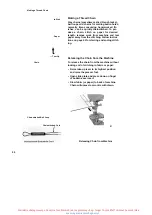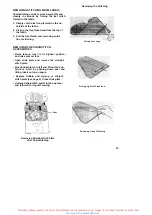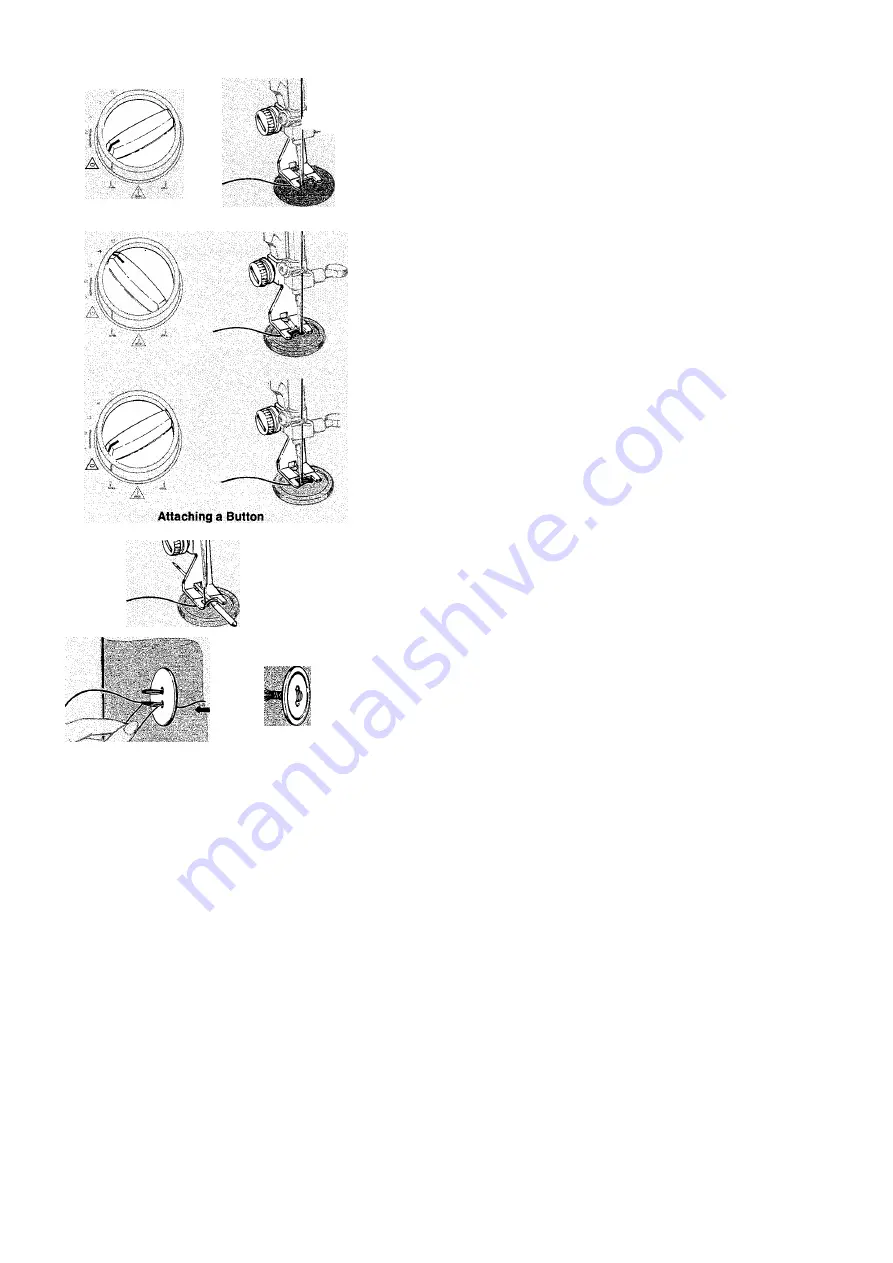
Needle in Groove
of Button Foot
Pull Needle Threads
to Back of Button
Thread Shank
Completed
buttons
Forming Thread Shank
• Stitch: Plain Zig-Zag j
• Stitch Width:
0
and
4
• Needle Position:
• Feed Cover Plate (See page 5 for attaching)
• Button Foot
The space between the holes in the button de
termines stitch-width settings. The 0 setting
must always be used to position the button
and to fasten stitching. For buttons with stand
ard hoie spacing, settings 0 and 4 are usually
satisfactory. For buttons with unusual hole
spacing, use setting 0 and increase or de
crease the width setting (4) as necessary.
1. Position button under button foot and lower
the needle into center of left hole. Lower
the foot. Turn hand wheel toward you until
the needle rises out of the button and is just
above the foot.
2. Set stitch width at 4. Turn hand wheel
toward you until needle is just above the
right hole. Increase or decrease stitch
width, if required, so that needle will enter
the right hole of button. Take six or more
zig-zag stitches at this setting, ending on
left side.
3. To fasten stitching, return to stitch-width
setting 0 and take about three stitches.
FORMING A THREAD SHANK
Buttons sewn on coats and jackets should
have a thread shank to make them stand away
from the fabric. To form a thread shank, sew
over the blade of a regular machine needle.
• Position button and lower button foot. Place
needle in groove of foot so that point enters
the hoie in the foot. The farther in you push
the needle, the longer the shank will be.
• After stitching, remove needle from groove.
Remove work from under presser foot, cut
ting threads about six inches from fabric.
Pull needle-thread ends to back of button
and form a firm shank between button and
fabric by winding threads tightly around at
taching stitches. Tie thread ends securely.
34
Instrukcje obsługi maszyn do szycia firm Polskich jak i zagranicznych np. Singer Toyota Pfaff Gritzner Łucznik Arka


